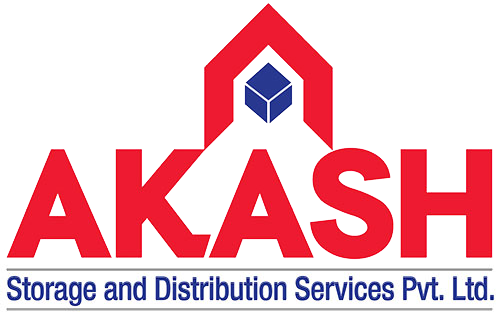Introduction
Inventory management plays a pivotal role in supply chain operations across businesses of all sizes. It presents a multitude of challenges that must be efficiently addressed. These challenges range from maintaining the optimal stock levels to ensuring precise tracking and timely order fulfilment. Businesses are required to confront these issues head-on to remain competitive in today’s dynamic market landscape. So in this blog, we will delve into the prevalent inventory management challenges encountered by businesses. Additionally, we will explore how Third-Party Logistics (3PL) warehousing can offer effective solutions to surmount these obstacles. Altogether just by providing inventory tracking and visibility.

Understanding Inventory Management Challenges
Before delving into the solutions presented by 3PL warehousing, let’s first identify the common challenges businesses face in inventory management:
-
Stock outs and Overstocking:
Striking the right balance between having enough inventory to meet demand and avoiding excess stock that ties up capital is a constant challenge for businesses. However, Stock outs can lead to lost sales and dissatisfied customers, while overstocking increases carrying costs and the risk of obsolescence.
-
Lack of Real-Time Visibility:
Manual inventory tracking and outdated systems hinder businesses’ ability to have accurate, real-time visibility into their inventory levels. However, this lack of visibility can lead to inaccurate stock counts, order processing delays and inefficient decision-making.
-
Order Fulfillment Accuracy:
Ensuring that the right products are picked, packed and shipped accurately is crucial for maintaining customer satisfaction. Because errors in order fulfillment can result in returns, additional costs and damaged customer relationships.
-
Seasonal and Demand Fluctuations:
Managing inventory during seasonal peaks and demand fluctuations can be challenging. Basically, businesses need to be prepared to scale up or down quickly without sacrificing service levels.
-
Warehouse Space Constraints:
Limited warehouse space can hinder a business’s ability to store and manage inventory efficiently. However, optimizing warehouse space usage is crucial to avoid stock outs and improve warehouse operations.
How 3PL warehousing Addresses Inventory Management Challenges

Now, let us explore how 3PL warehousing can help businesses overcome these inventory management challenges:
-
Demand Forecasting and Inventory Planning:
3PL providers use advanced analytics and data-driven forecasting models to help businesses predict demand patterns accurately. However, this enables better inventory planning, ensuring that businesses maintain the right stock levels to meet customer demand without overstocking.
-
Real-Time Inventory Visibility:
3PL warehousing solutions offer advanced inventory management systems that provide real-time visibility into stock levels, order status and shipment tracking. Accordingly, businesses can access this information anytime, enabling better decision-making and improved order fulfillment accuracy.
-
Order Fulfillment Efficiency:
3PL warehouses are equipped with experienced staff and efficient order processing systems. Altogether with streamlined order fulfillment processes, businesses can ensure that orders are accurately picked, packed and shipped promptly, reducing errors and enhancing customer satisfaction.
-
Scalable Solutions:
3PL warehousing offers flexible and scalable solutions that adapt to businesses’ changing needs. During seasonal peaks or unexpected demand surges, 3PL providers can quickly scale up warehouse space and resources to meet the increased requirements.
-
Optimized Warehouse Space Management:
3PL providers are experts in warehouse space utilization. They employ innovative storage techniques, such as pallet racking systems and bin systems, to maximize warehouse space and optimize inventory storage.
-
Technology and Automation:
3PL warehousing leverages technology and automation to streamline inventory management processes. Additionally barcoding, RFID tagging and automated picking systems enhance inventory accuracy and reduce manual errors.
Cost Savings and Efficiency
Besides addressing inventory management challenges, 3PL warehousing also brings cost-saving opportunities and operational efficiencies to businesses:
-
Reduced Warehousing Costs:
Outsourcing warehousing to 3PL providers eliminates the need for businesses to invest in their own warehouses, reducing fixed costs and capital expenditures.
-
Economies of Scale:
3PL providers serve multiple clients, allowing them to leverage economies of scale. Businesses benefit from shared resources and reduced transportation costs due to optimized routes and load consolidation.
-
Focus on Core Competencies:
By entrusting inventory management to 3PL providers, businesses can focus on their core competencies and strategic initiatives, leading to improved overall business performance.
Inventory Tracking and Visibility

Real-time inventory tracking and visibility provided by 3PL warehousing offer several advantages:
-
Data-Driven Decision-Making:
Accurate and up-to-date inventory information enables businesses to make data-driven decisions. Similarly it helps identify slow-moving items, monitor inventory turnover and optimize stock levels based on demand patterns.
-
Improved Customer Service:
With real-time inventory tracking, businesses can provide customers with accurate information about product availability, expected delivery times and order status, meanwhile leading to improved customer service and satisfaction.
Risk Mitigation and Compliance

3PL warehousing also contributes to risk mitigation and compliance management:
-
Disaster Recovery and Contingency Planning:
Leading 3PL providers have robust disaster recovery plans and contingency measures in place to handle unforeseen events, indeed ensuring minimal disruption to supply chain operations.
-
Compliance and Regulatory Support:
3PL warehousing providers are well versed in managing compliance requirements, including customs regulations, trade agreements and local laws, further offering businesses seamless cross-border logistics support.
Enhanced Scalability and Flexibility
3PL warehousing solutions are inherently scalable and flexible, offering several advantages:
-
Seasonal and Peak Period Support:
During seasonal peaks or promotional events, 3PL providers can quickly adapt to increased order volumes, ensuring smooth operations without compromising service levels.
-
Geographical Expansion:
3PL warehousing enables businesses to expand their market reach without the need to establish new warehouse facilities in different regions.
Improved Customer Satisfaction
By addressing inventory management challenges and optimizing supply chain operations, 3PL warehousing contributes to improved customer satisfaction:
-
Faster and Accurate Order Fulfillment:
With streamlined processes and efficient inventory management, businesses can fulfill orders faster and with higher accuracy, leading to happier and more loyal customers.
-
Responsive Customer Service:
Real-time inventory tracking enables businesses to proactively communicate with customers regarding order status, potential delays, and other important information, enhancing transparency and customer trust.
Conclusion
In conclusion, effective inventory management is vital for a successful supply chain, and businesses face various challenges in maintaining optimal stock levels, tracking inventory accurately and ensuring efficient order fulfillment. 3PL warehousing offers a comprehensive solution to overcome these challenges. With advanced technologies, real-time visibility, scalability, cost savings, risk mitigation and enhanced customer satisfaction, 3PL warehousing provides a competitive advantage for businesses seeking to optimize their inventory management processes. By collaborating with a reputable 3PL provider, businesses can focus on their core competencies while entrusting their inventory management to experts, leading to improved efficiency, reduced costs and a more streamlined and agile supply chain.

Write a Comment